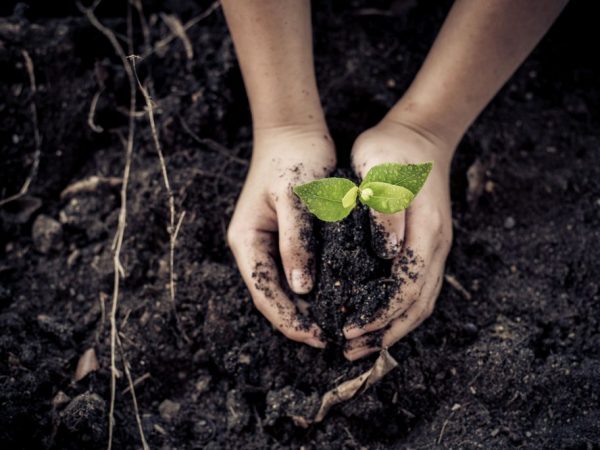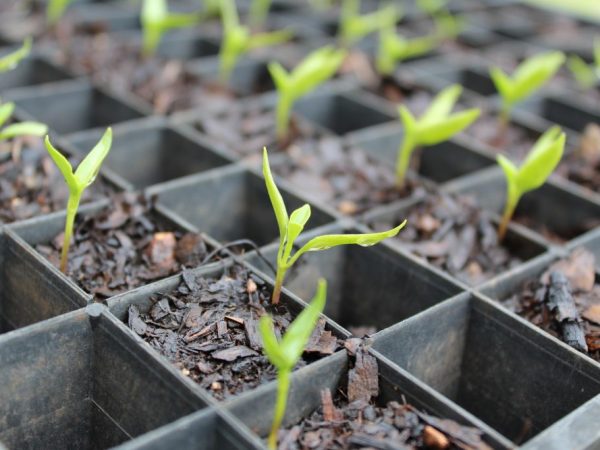Why do peppers have black leaves
The first symptom of bell pepper disease is that the leaves of the peppers turn black. It is necessary to establish the cause and type of the disease as early as possible in order to save the crop.

Why do peppers have black leaves
Diseases
Diseases such as the following can lead to blackening of sweet pepper leaves:
- late blight;
- black bacterial spot.
Late blight
Late blight refers to fungal diseases. The causative agents of this fungus live in the soil. The disease is transmitted between tomatoes, peppers and potatoes. The first signs are the appearance of black, with a light edging, spots on the leaves, stems and fruits. Spores of the fungus are clearly visible on the spots in the form of a white bloom. From the plants, spores enter the ground and infect other seedlings. In most cases, seedlings are affected by late blight after mid-July during the fruiting period. This is facilitated by:
- lowering the temperature in the dark;
- non-compliance with the landing pattern;
- moistening the soil with cold water.
Black bacterial spot
Bacterial black spot most commonly affects peppers and tomatoes.
A symptom of the disease is the appearance on the leaves and stems of black dots with a yellow border. In most cases, the bush gets sick with black bacterial spot even at the seedling stage. Especially during planting seedlings in the ground, when mechanical damage is inflicted on roots, stems and leaves. When grown outdoors, this disease is less common than when grown in greenhouses or greenhouses. Black spot bacteria are activated under conditions:
- high air humidity;
- temperatures above 25˚C.
Improper care
Bell peppers turn black for several reasons:
- lack of water;
- temperature drops;
- lack of nutrients;
- pests;
- high air humidity.

Seedlings require proper care
Lack of water
Lack of rain and timely watering leads to a lack of moisture.
Because of this, the leaves darken, become lethargic and saggy. If you do not make up for the loss of moisture, then the plant will shed all the leaves and die. Try to water on time and monitor the condition of the soil.
Temperature changes
Bell pepper grows well and develops at an air temperature of 20˚C. Therefore, many varieties of this culture react negatively to a sharp change in temperature.
Lack of nutrients
Lack of nutrients such as iron, nitrogen, potassium and phosphorus also lead to blackening of the leaves. If the watering and temperature are normal, and there are no diseases or parasites, but the leaves have darkened, feed the plant with mineral fertilizers.
Pests
Pepper leaves can also turn black due to the appearance of such a pest as a spider mite. Most often they are found in greenhouses and hotbeds, because they prefer warm and humid air.
Treatment methods
Bushes affected by fungal late blight can be cured if the disease is detected at an early stage.Diseases with bacteria are almost impossible to cure.
Recommendations:
- Do not use seedlings affected by black spot. It must be separated from healthy plants and burned.
- For the treatment and prevention of late blight, regularly treat pepper with 1% Bordeaux liquid, fungicides.
- If a disease is detected, treat the pepper with a solution of 10 liters of water 40 g of chlorinated copper oxide, but later than 25 days before harvesting. If there is little time left, manually cut off diseased leaves, dig up the affected bushes and burn them.
- Spray the tools you use with a manganese solution and discard the gloves.
Spider mite control
To combat spider mites, you can purchase special preparations in the store or prepare a solution yourself:
- Laundry soap solution. Take 10 liters of water, dissolve 1 pc. laundry soap, rinse the leaves with a solution. This tool significantly reduces the number of pests, but does not completely exterminate them.
- Alcohol treatment. Take rubbing alcohol and use a sponge to scrub the leaves and stems. Do not dilute alcohol - water will increase the drying time, which will provoke burns.
- A decoction of henbane. Grind 3 kg of fresh henbane harvested during flowering. Boil it for 3 hours, strain and bring the broth to 10 liters. Spray.
- Broth of tobacco. 400 gr. infuse tobacco in 10 liters of water for 24 hours. Boil, cool and strain the broth. Add 50 g of laundry soap and another 10 liters of water. Spray.
- Infusion of garlic. Mix 3 liters of water with 500 gr. chopped garlic and leave in a dark place for 5 days. For spraying, take 60 ml of infusion, dilute in 10 liters of water and add 50 g of laundry soap. Treat the leaves and stems.
Prevention of blackening
It is rather difficult to treat Bulgarian pepper, it is better to try to prevent diseases.
- To prevent blackening of the leaves, start with the seeds. Before sowing, be sure to soak them for 4 hours in a manganese solution. Then rinse and sow. Store seeds are not treated with manganese, they are sold already prepared.
- Process planting tools and boxes with potassium permanganate solution. Soak them in the solution for 4 hours.
- Fry the soil for seedlings in the oven for 1 hour at 180˚C.
- In case of manifestations of diseases in this area in previous seasons, the soil must be disinfected. Treat the area with boiling water for about 1 bucket per m2. Remove infected plants and burn.
- Disinfect your garden tools.
- If bacteria and fungi are found in the greenhouse, it is recommended to replace the topsoil with a thickness of more than 60 cm.
- Drizzle with warm water.
- The acidity of the soil should be neutral, if the acidity is exceeded, add 1 kg of lime per 1m2 to the ground.
- Do not plant peppers in the same place for two years in a row, the break should be about 3-4 years.
- Do not plant seedlings in the beds after potatoes, tomatoes, and eggplant.
- Water the plant in moderation, excessive moisture leads to stagnant water and blackening of the leaves.
- Loosen the beds regularly to provide oxygen to the roots. With its lack, the roots begin to take useful substances from the aerial part, the leaves wither and turn black.
- Plant the seedlings at a sufficient distance from each other. This makes it easier to fight diseases, bacteria and fungi more slowly infect nearby growing plants.
- Ventilate the greenhouse regularly during the day to prevent waterlogging.
Conclusion
Pepper is a rather demanding culture. But with the right choice of the variety and the observance of all preventive measures, growing this delicious vegetable will not cause much trouble. And the result will delight you with its bright and bountiful harvest.


